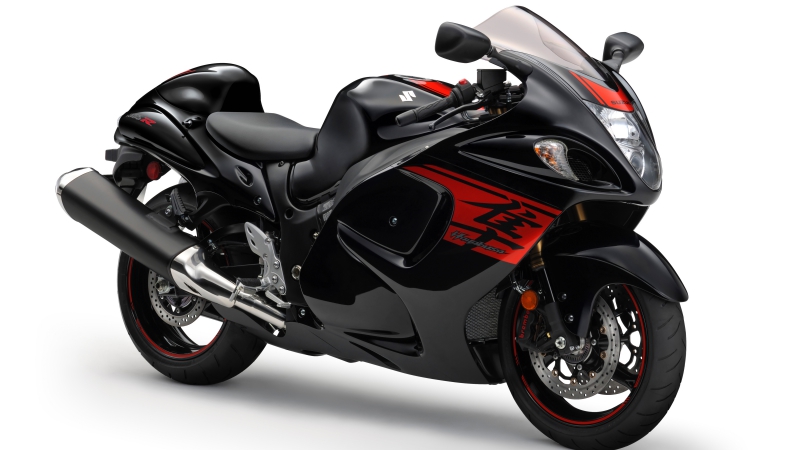December isn’t shaping up to be a good month for speed freaks. Bugatti’s boss has reiterated their continued disinterest in setting a new production car top speed record for the Chiron, the team behind the ambitious Bloodhound SSC land speed record car has shuttered after ten years of development, and now we bid farewell to the legendary Suzuki Hayabusa as it will be consigned to the great drag strip in the sky in 2019, following 20 long years of instilling fear and respect amongst bikers and humbling exotic car owners.
The Hayabusa’s end wasn’t unexpected, Suzuki had planned to put the old bike out to pasture in Europe following the implementation of Euro 4 emissions regulations in 2016. Though the Hayabusa’s 1.3-litre 4-cylinder powerplant wasn’t able to meet the new regulations, legislators gave motorcycle companies a two-year grace period to sell off existing models before banning the sale of non-compliant motorcycles outright.

However, with the Hayabusa bowing out of the European market, Suzuki has decided to simply discontinue it for the rest of the world, thus ending the last and greatest from the infamous motorcycle top speed wars of the 1990s.
By most accounts, even though the Hayabusa is no spring chicken as it had barely changed over the past 20 years, it is still no slouch in today’s company of fast bikes. Despite the existence of faster, more capable bikes out there, in the minds of many, the Hayabusa is still the speed king, simply because of its sordid reputation.
Back in the mid-1980s Honda and Kawasaki were vying to outdo one another in the top speed department. Things started to escalate with the introduction of Honda’s 240km/h VF1000R in 1984, which just so happens to step into the “world’s fastest” territory.
While the top speed barrier steadily crept up in tiny increments through the next decade, Suzuki’s crown jewel emerged out of nowhere in 1999 to steal the top speed title from right under the noses of Honda and Kawasaki with a massive 16km/h advantage over its closest rival, the 290km/h Honda Super Blackbird.

Kawasaki was expected to gun for the title again with the ZX-12R in 2000, but to everyone’s surprise, it couldn’t with its 301km/h top speed boast. Or to be more precise, it wouldn’t, as it was limited. As it turns out, it was reported that a year earlier BMW executives travelled to Japan, concerned about the escalating speed wars Honda and Kawasaki were partaking in and the danger these bikes posed to public safety on the Autobahn. Manufacturers later converged at a meeting in Bologna where they agreed to “cease competitive marketing strategies with respect to maximum speed achievable” and peg the limit to 299km/h.
While it is highly unlikely that the Hayabusa was directly responsible in forcing BMW’s hand in the matter, after all the whole road safety concern of selling 300km/h capable superbikes to the unwashed masses has been circulating amongst talking heads since the 1980s, its name has been inexorably linked to the whole affair.

Being the last motorcycle to emerge from the rivalry and the last to have its speed officially unrestricted, many conflated the Hayabusa’s accolade and timing as the sole reason behind the “agreement”. This further entrenched the urban myths and legends surrounding the Hayabusa’s feared top speed and its manifestation as the ultimate symbol of sticking it to the Man, so much so that 20 years on, in a world where Kawasaki’s incredible 400km/h-capable track-only H2R rules to speed roost, the Hayabusa gilded status is yet to be eclipsed in the heads and hearts of many, and most likely, never will be.

